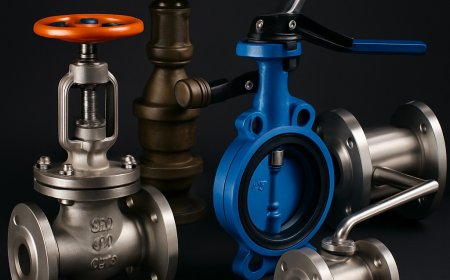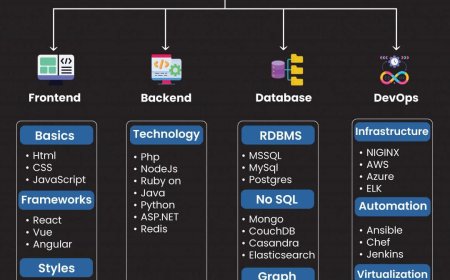What Is USCIS Priority Date and Why Does It Matter in 2025?
In the green card process, your USCIS priority date marks the day your immigration petition was officially received by U.S. Citizenship and Immigration Services.

The dream of living permanently in the United States drives thousands of people every year to begin the complex journey toward a green card. Whether youre applying through family, employment, or other special categories, one key term that pops up during this process is your USCIS priority date. While it may seem like a small detail on paper, this date can have a huge impact on how long it takes to get your green card.
Lets simplify what a USCIS priority date is, how it works, why it matters, and what you should know about it in 2025. If you're feeling overwhelmed by immigration terms, don't worrywell break it down in plain, friendly language.
Understanding the USCIS Priority Date
In the green card process, your USCIS priority date marks the day your immigration petition was officially received by U.S. Citizenship and Immigration Services. Think of it as your spot in line.
If a U.S. citizen sponsors a relative or an employer sponsors a foreign worker, they submit a petition (Form I-130 or Form I-140). The date USCIS receives that form becomes the priority date. Its that simple.
This date will determine when the green card applicant can move to the next step in the process, depending on the visa category and their country of origin.
Why Is the USCIS Priority Date So Important?
Each year, the U.S. has a cap on how many green cards it issues for different categories and countries. Due to high demand and limited availability, many applicants must wait until a green card number becomes available for them.
This is where your priority date becomes critical. You can only move forward with your green card application once your priority date becomes current, meaning it's finally your turn in line.
Who Needs to Track Their Priority Date?
Not everyone needs to worry about delays. If you are an immediate relative of a U.S. citizensuch as a spouse, unmarried child under 21, or a parentyoure in a special category that isnt subject to yearly limits. That means your green card process can begin right away.
However, if you fall into a preference categorylike siblings of U.S. citizens, adult children, or employment-based applicantsyoull likely face a waiting period. And in these cases, tracking your priority date is essential.
How to Find Your USCIS Priority Date
After USCIS receives the immigration petition, they send a receipt notice called Form I-797. Your priority date will be printed on this document. Be sure to keep this form safe, as its your reference point throughout the immigration process.
What Is the Visa Bulletin?
To know when your priority date is current, youll need to consult the Visa Bulletin, which is released monthly by the U.S. Department of State. This bulletin contains a table that lists the cutoff dates for different visa categories and countries.
There are typically two charts:
-
Final Action Dates This tells you when the government is ready to approve green cards for a specific group.
-
Dates for Filing This lets applicants submit their forms early before their green card is approved, giving them a head start.
To use the Visa Bulletin:
-
Find your visa category (e.g., F2A for spouses of green card holders or EB2 for certain skilled workers)
-
Look for your country of chargeability (usually your birth country)
-
Compare your USCIS priority date with the date in the bulletin
If your date is earlier than the one shown in the bulletin, your date is current, and you can proceed.
Why Do Some People Wait Longer Than Others?
The U.S. immigration system is based on a quota model. Each visa category has a limited number of green cards available annually. On top of that, no more than 7% of the total annual visas can go to nationals of any one country.
This means people from countries with high demandlike India, China, Mexico, and the Philippinesoften face longer wait times. Meanwhile, people from countries with lower demand may have shorter waits.
Example: How the Priority Date Works in Real Life
Imagine your employer files a petition for you on February 20, 2023, under the EB2 (employment-based second preference) category. That becomes your priority date. If the Visa Bulletin for your country shows that EB2 applications are current up to January 1, 2023, youll have to wait until your February 2023 date becomes current.
Once the bulletin shows a cutoff date of March 2023 or later, you're eligible to move forward.
What to Do While Waiting
Waiting for your priority date to become current can be frustrating, especially when the wait is several years. But you can use this time wisely:
-
Organize your documents: passports, birth certificates, and translations
-
Stay informed by checking the Visa Bulletin each month
-
Keep your address up to date with USCIS to receive notifications
-
Consider speaking with an immigration attorney about long-term planning
-
Avoid legal or immigration violations, which can harm your case
Staying proactive can save you time and stress when your date finally becomes current.
What Happens When the Priority Date Becomes Current?
When your USCIS priority date is current, you can take the next step:
-
If youre in the U.S., you can apply for adjustment of status using Form I-485
-
If youre outside the U.S., you will complete consular processing, where you attend an interview at a U.S. embassy or consulate
In both cases, youll likely attend a biometrics appointment and possibly a green card interview.
Can You Lose or Retain Your Priority Date?
If your petition is denied or withdrawn, your priority date may be lost. However, if you file a new petition in the same category, you may be able to retain your original priority datea huge advantage, especially if youve waited years.
For example, if your employer changes but your category remains the same, you may still keep your old date, speeding up your timeline significantly.
Can You Speed Up the Process?
Most people cant change their priority date. However, in rare cases, USCIS may expedite a petition based on humanitarian reasons, national interest, or extreme hardship. Employment-based applicants may also use premium processing to speed up the initial approval but not the priority date queue.
It's important to remember that premium processing does not move your place in lineit just helps get your petition reviewed faster.
Final Thoughts: A Date Worth Remembering
The USCIS priority date might seem like a small detail, but it can shape your entire green card journey. It represents your position in a long and complex system, and staying informed about it is one of the smartest things you can do.
While immigration can be slow and uncertain, its also full of hope and possibility. By understanding how priority dates work and keeping a close eye on the Visa Bulletin, youll be better prepared when its finally your turn.
Patience and preparation go hand-in-hand when it comes to immigration. And when that green card finally arrives, youll know that every stepand every waitwas worth it.






































